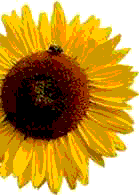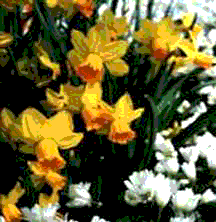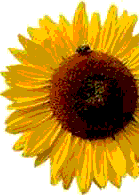.
|
Strength In This Field
Collection:

|
More Info:

|
Where:
 . .
|
|
|
|
|
|
|
|
.
|

The
Provincial Museum of
Alberta
Edmonton,
Alberta, Canada
.
|
 The Botany Department has a collection
of some 35,000 vascular plant specimens and some 110,000
cryptogamic plant specimens.
The Botany Department has a collection
of some 35,000 vascular plant specimens and some 110,000
cryptogamic plant specimens.
|

|
.
|
|
.
|

Museums
of Natural
History
Copenhagen
(Faculty of Science, University of Copenhagen)
Denmark
|
 The
Botanical Museum (and
Library) holds
collections of c. 2,325,000 specimens separated into 9
different herbaria:
The
Botanical Museum (and
Library) holds
collections of c. 2,325,000 specimens separated into 9
different herbaria:
- The General Herbarium of
Vascular Plants
(1,155,000 specimens) consists of collections from all
over the world and from almost all families. It is
estimated that 11,300 of the worlds known 14,000 genera
are represented. It holds an estimated 25,000
type-specimens under registration. The herbarium is
especially rich in material from the Faroe Islands,
Iceland, Greece, Spain, Macaronesia, Africa, SE-Asia,
Mexico, W.-Indies, Central America and South America.
- The Herbarium of Danish
Vascular Plants
(230,000 specimens) consists of collections from all
parts of Denmark from the 18th century up to now. It
includes at least 1500 species and is the largest
collection of Danish plants. Many of the specimens
depicted in Flora Danica are kept in this collection.
Additionally, the herbarium comprises the file of the
Topographical-Botanical Investigation of Denmark as well
as the unpublished sources of the Botanical Locality
Register.
- The Herbarium of Greenlandic
Vascular Plants
(174,000 specimens) consists of collections from all
parts of Greenland from the 17th century up to now. It
includes about 515 species and is the largest collection
of Greenlandic plants in the world.
- The Herbarium of
Bryophytes (314,000
specimens) consists of collections of all taxonomical
groups and from all parts of the world. It holds the
largest collections of Danish (c. 700 species) and
Greenlandic (c. 600 species) bryophytes.
- The Herbarium of
Algae (133,000
specimens) consists of collections of all taxonomical
groups of algae from all parts of the world. It holds the
largest collections of Danish algae, and has important
collections from Greenland, Iceland, the Canary Islands,
the Faroe Islands, the West Indies and
Scnadinavia.
- The Herbarium of
Fungi
(139,000 specimens)
consists of non-lichenized fungi from all taxonomical
groups and from all parts of the world. It holds the
largest collections of Danish (c. 5000 species) and
Greenlandic (c. 1500 species) fungi.
- The Herbarium of
Lichens (220,000)
consists of lichenized fungi from all taxonomical groups
and from all over the world. It holds the largest
collections of Danish (c. 900 species) and Greenlandic
(c. 950 species) lichens.
- The Collection of Useful
Plants (1,000 pieces)
is maintained for exhibition purposes. And
finally,
- The Collection of Wood
Samples (500 samples)
is a reference collection.
An extensive online searchable
Botanical
Specimen Database is
also available.
.
|

|
.
|
|
.
|

Botanical
Museum,
Finnish Museum of Natural
History
Helsinki,
Finland
.
|
 The Museum hosts a large floristic archive, consisting
mainly of the primary material and floristic notes made
mainly in the eastern Fennoscandia by Finnish botanists. The
records of the Finnish and NW Russian vascular plants have
partly been entered into the Museum's floristic database.The
copies of the forms used in examining the habitats of the
threatened vascular plants of Finland are also partly
preserved in this archive. There are also various cardfiles
on the collections, correspondance and various papers on
certain botanists of the past.
The Museum hosts a large floristic archive, consisting
mainly of the primary material and floristic notes made
mainly in the eastern Fennoscandia by Finnish botanists. The
records of the Finnish and NW Russian vascular plants have
partly been entered into the Museum's floristic database.The
copies of the forms used in examining the habitats of the
threatened vascular plants of Finland are also partly
preserved in this archive. There are also various cardfiles
on the collections, correspondance and various papers on
certain botanists of the past.
|

|
.
|
|
.
|

Museo
di Storia Naturale di Firenze
(Natural History Museum of
Florence)
Florence
Italy
.
|
 Botany
- The Botanical Museum has two herbaria that were created in
the pre-Linnaean period, that is before the famous Swedish
scientist, Carl Linnaeus (1707-1778) established definite
rules for classifying and defining plants in 1753. These are
the Cesalpino Herbarium, one of the world's first herbaria,
prepared in 1563, and the Micheli-Targioni Herbarium, that
dates from the early XVIII century.
Botany
- The Botanical Museum has two herbaria that were created in
the pre-Linnaean period, that is before the famous Swedish
scientist, Carl Linnaeus (1707-1778) established definite
rules for classifying and defining plants in 1753. These are
the Cesalpino Herbarium, one of the world's first herbaria,
prepared in 1563, and the Micheli-Targioni Herbarium, that
dates from the early XVIII century.
The Botanical
Garden has several
permanent exhibits involving a number of thematic routes
such as The Pteridophytes, Succulent Plants, Carnivorous
Plants, Medicinal plants, Tropical Greenhouse, Bromeliad
Greenhouse, The Cycads, and the Orchids.
|

|
.
|
|
.
|

Natural
History Museum of
Maastrich
Province of Limburg,
Maastricht
The Netherlands
.
|
 The Botany
Collection is a well
documented collection of plants from the whole of southern
Limburg between 1890 and 1943 and ranks amongst the most
important regional herbariums in The Netherlands. On the
basis of this herbarium detailed studies into the flora and
vegetation at the start of this century could be carried
out. The Herbarium consists of c. 20,000 paper covers with a
total of some 60,000 specimens. Of the smaller herbariums
are the collections of pharmacist herbariums.
The Botany
Collection is a well
documented collection of plants from the whole of southern
Limburg between 1890 and 1943 and ranks amongst the most
important regional herbariums in The Netherlands. On the
basis of this herbarium detailed studies into the flora and
vegetation at the start of this century could be carried
out. The Herbarium consists of c. 20,000 paper covers with a
total of some 60,000 specimens. Of the smaller herbariums
are the collections of pharmacist herbariums.
|

|
.
|
|
.
|

The
Natural History Museum and Botanical
Garden
Oslo
Norway
.
|
 The
Botanical Garden
contains some 1800 different plants arranged according to
family and genus. Here one can find some 300 medicinal plans
(the Economic Garden), some 1450 species of plants covering
the mountain flora of Norway and of other mountainous areas
such as Caucasia (the Rock Garden). A permanent exhibition
of "botanical art" (the Dagny Tande Lid) is also available
to the public.
The
Botanical Garden
contains some 1800 different plants arranged according to
family and genus. Here one can find some 300 medicinal plans
(the Economic Garden), some 1450 species of plants covering
the mountain flora of Norway and of other mountainous areas
such as Caucasia (the Rock Garden). A permanent exhibition
of "botanical art" (the Dagny Tande Lid) is also available
to the public.
|

|
.
|
|
.
|

Albany
Museum
Grahamstown
South Africa
|
 The Botany is represented here through a herbarium and an
agricultural Institute as follows:
The Botany is represented here through a herbarium and an
agricultural Institute as follows:
- Selmar
Schonland
Herbarium
(plants) - the herbarium houses just under 200 000 plant
specimens, making it the 4th largest herbarium in South
Africa and the 9th largest on the whole African
continent. Taxonomic coverage is broad, and although the
majority of specimens are Angiosperms, the herbarium has
a very large collection of algae. A computer database of
botanical data and specimen records is being developed,
and is available online to any computer registered user
through the Rhodes University computer network system but
is not yet available to outside on-line users.
- Range
and Forage
Institute
(Agricultural Research Council)
.
|

|
.
|
|
.
|

Natur
Historiska Riksmuseet
(Swedish Museum of Natural
History)
Stockholm
Sweden
|
 The Botany is extensively represented here through the
following principal areas:
The Botany is extensively represented here through the
following principal areas:
- The Department
of Phanerogamic
Botany - The
collection comprise of some four (4) million
specimens making this collection one of the largest in
the world.The collection is divided into three (3)
major herbaria as follows:
- The Nordic
herbarium has
more than 1.5 milion specimens from the Nordic
countries gathered during the 250 years that have
passed since the late 18th century. There is also a
number of specimens preserved in alcohol which is
available in a database - The botanical
collections in alcohol
database. Some
Separate
Collections of The Nordic
herbarium are
also available in databases.
- The
Regnellian
herbarium
keeps material from South and Central America being
one of the largest of its kind. The herbarium holds
some 400.000 specimens, the type material comprising
of some 25.000 specimens. Part of this material has
been computerized and made available in the
botanical
type collection
database. A
separate Ecuador herbarium exist with some35.000
specimens, and another herbarium -the Historical
Swartz herbarium is also there with some additional
6.000 specimens.
- The General
herbarium
houses about one million ( 1.000.000) plant specimens
from all other parts of the world not covered in their
specialized herbariums. Some parts of the General
herbarium have been computerized and are available in
searchable databases. All known typematerial in the
General herbarium has been included in the botanical
type collection, a database comprising about 18.000
records, which also include some type material from
the Regnellian herbarium. The gymnosperm collection
which comprise some 7500 specimens, is available in
the Gymnosperm collection database. The General
herbarium has some 4000 specimens material preserved
in alcohol and available in their Botanical
collections in alcohol
databse.
- The Historical Botanical
Collections are divided int two (2)
sections:
- The Department of
Cryptogamic Botany - The cryptogamic collections of the
Swedish Museum of Natural History consist of more than
two (2) million specimens including many type
specimens. Part of the collections is registered in
databases. These collections
are divided into these parts:
- Fungi (332 000 specimens)
- Myxomycetes (2 700
specimens)
- Lichens (391 000
specimens)
- Algae (>76 000
specimens)
- Bryophytes (1 215 000
specimens)
- Pteridophytes (160 000
specimens)
- Galls (1 400 specimens),
and
- Bacteria (66
specimens)
- The Environmental
Specimen Bank
(ESB) - deals with the monitoring of contaminants in the
Swedish environment and fauna. Studies of biological
diversity (through DNA studies) and the effects of
noxious substances on threatened animal species are the
primary areas of interest. The ESB has one of the oldest
and largest collections of environmental specimens in
Sweden.
- The Pollen
Collection of
special interest are in the following research
areas:
- Systematic Botany
- Aeropalynology
- Forensic palynology
- Melittopalynology and
- Quaternal geology
The pollen material is preserved
in specially made slides. The International slide collection
is one of the internationally most significant collections.
It contains more than 25000 slide collections of different
plant families. Also a Scandinavian and a Historical
collection are part of this pollen material.
In addition, there is a Palynological
Laboratory.
The Lab studies the development, ultrastructure,
histochemistry and morphology of pollen grains and spores,
with special reference to taxonomy, as well as the presence
and distribution of pollen and spores in the air. Pollen and
spore service with special emphasis on the allergenic
species is provided daily to the public.
.
|

|
.
|
|
.
|

The
Academy of Natural Sciences
Philadelphia, PA,
USA
.
|
 The Botany
Department contains
one of the largest collection of plant specimens in the
world (which are housed in the Herbarium) with nearly two
million dried, pressed plants, some collected more than two
hundred years ago.
The Botany
Department contains
one of the largest collection of plant specimens in the
world (which are housed in the Herbarium) with nearly two
million dried, pressed plants, some collected more than two
hundred years ago.
|

|
.
|
|
|
|
|
|
|
|
|
|
|
|
|


